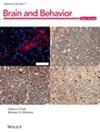Association Between Hypoxia-Inducible Factor-1α and Neurological Diseases: A Bidirectional Two-Sample Mendelian Randomization Analysis
Abstract
Background
Previous studies have suggested that hypoxia-inducible factor 1-α (HIF-1α) exerted multiple effects on different central nervous system disorders. However, it is still uncertain whether plasma HIF-1α can be a causal indicator for the relevant diseases. This study aimed to test the causality relationship between plasma HIF-1α and neurological diseases, including cerebrovascular diseases, migraines, and neurodegenerative diseases with a Mendelian randomization (MR) method.
Methods
Single-nucleotide polymorphisms (SNPs) genetically representing plasma HIF-1α were screened as instrumental variables (IVs). Summary-level data for neurological disorder from genome-wide association studies (GWAS) were identified as outcomes. The causal effects between the IVs and outcomes were determined via the major analysis of inverse-variance-weighted (IVW) method. The reverse causal direction was also performed to investigate the possibility of reverse causation.
Results
The findings revealed that plasma HIF-1α was identified to be genetically associated with cardioembolic stroke (CES) (OR = 0.885; 95% confidence interval [CI] = 0.796–0.985, p = 0.026), migraine (OR = 0.941, 95% CI = 0.888–0.998, p = 0.041), and drug-induced migraine without aura (MOA) (OR = 0.586, 95% CI = 0.375–0.916, p = 0.019). There was no association identified in plasma HIF-1α with subarachnoid hemorrhage (SAH), other stroke and migraine subtype, and neurodegenerative disorders. The reverse-MR analysis revealed that the above-stated neurological diseases did not have a causal effect on plasma HIF-1α levels. Sensitivity and validation analyses support that the above results are stable.
Conclusions
Our research indicated that plasma HIF-1α may have a causal effect on the risk of CES, migraine and drug-induced MOA, providing new insights for those disease prevention and therapeutic approaches.


 求助内容:
求助内容: 应助结果提醒方式:
应助结果提醒方式:


